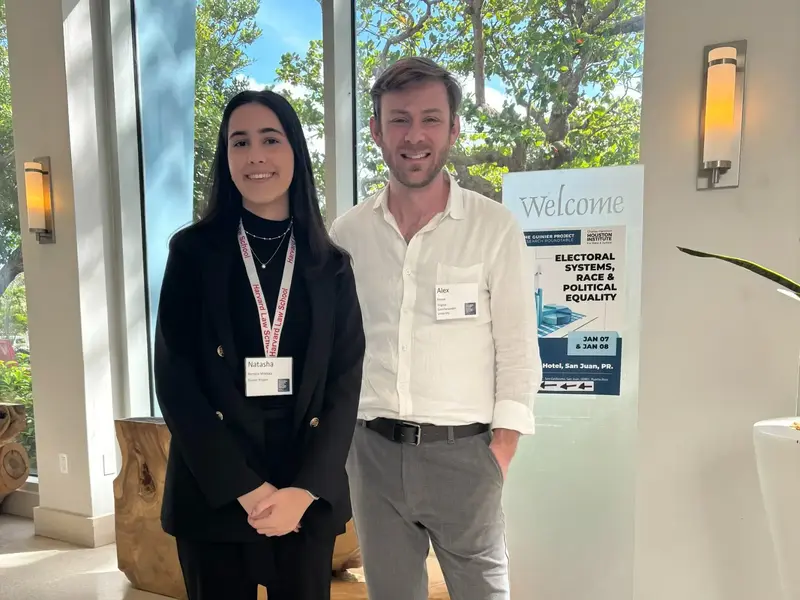
March 10, 2025
For war crimes defendants, media coverage can reflect how audiences see ‘local justice’ and ‘international justice’ differently
Share this story
Victim, perpetrator, witness: The news media’s depictions of political violence frequently involve the assignment of specific – and easily understandable – roles. But when those roles become muddled, the media’s framing of those transitions can vary.
In a new study published in January, Virginia Commonwealth University researchers Jessica Trisko Darden, Ph.D., and Amanda Wintersieck, Ph.D., both associate professors in the Department of Political Science in VCU’s College of Humanities and Sciences, analyzed reporting on the case of Dominic Ongwen.
Ongwen, a former child soldier who had been forcibly abducted by the Lord’s Resistance Army in Uganda, went on to climb the ranks of the extremist group’s leadership. He was found guilty in 2021 for a total of 61 crimes and sentenced by the International Criminal Court in The Hague, Netherlands, to 25 years in prison.
As both a victim and perpetrator, Ongwen holds an ambiguous status under international law, and media portrayals of him and others with similar backgrounds can be equally complex.
Trisko Darden and Wintersieck worked with Izabela Steflja, Ph.D., a political science professor at Wilfrid Laurier University in Canada, as well as a group of Federal Work-Study students to catalogue nearly 800 news articles related to Ongwen’s case. Collecting data and identifying themes, they eventually pulled out 117 articles that used variations of the word “turn,” analyzing the context in which the word was used in each instance.
What they found is that individuals facing charges in international court “can be understood very differently, in very distinct contexts,” Trisko Darden said. “In their home community or their home country, they may be understood in a very different way than they are, say, in a European, transnational court.”
In other words, victim-perpetrators can be judged more harshly by the home communities that have been more directly affected by their crimes, compared with international audiences.
“The media does really shape how we understand war crimes prosecutions, and there’s a big gap in coverage between international and local prosecutions,” Trisko Darden said. “Our research really recognizes this tension between local justice and international justice, and how the affected communities understand and frame those different processes.”
Since its establishment in 2002, the International Criminal Court has investigated and tried individuals charged with crimes of concern to the international community. As of early this year, there have been 32 cases before the court, including Ongwen’s.
“In conceptualizing what this project looked like, we really struggled,” Wintersieck said. “And when we sat down to figure out what we were struggling about, it was that we lacked a theoretical framework. Nobody had provided a framework for understanding this process, and so this is a theory-building piece [that] scholars who are interested in looking at these processes can use.”
This is Wintersieck and Trisko Darden’s second article analyzing the media depiction of Ongwen.
Currently, they are working with a new group of FWS students on a study about another individual from the Lord’s Resistance Army who was prosecuted within Uganda instead of being sent to The Hague, allowing comparisons “across the different reporting of local, regional and international sources and to understand differences in how prominent these trials were,” Trisko Darden said. “We’re interested in understanding how global publics understand the value of different justice mechanisms for war crimes, as seen through news media and reporting.”
Subscribe to VCU News
Subscribe to VCU News at newsletter.vcu.edu and receive a selection of stories, videos, photos, news clips and event listings in your inbox.










